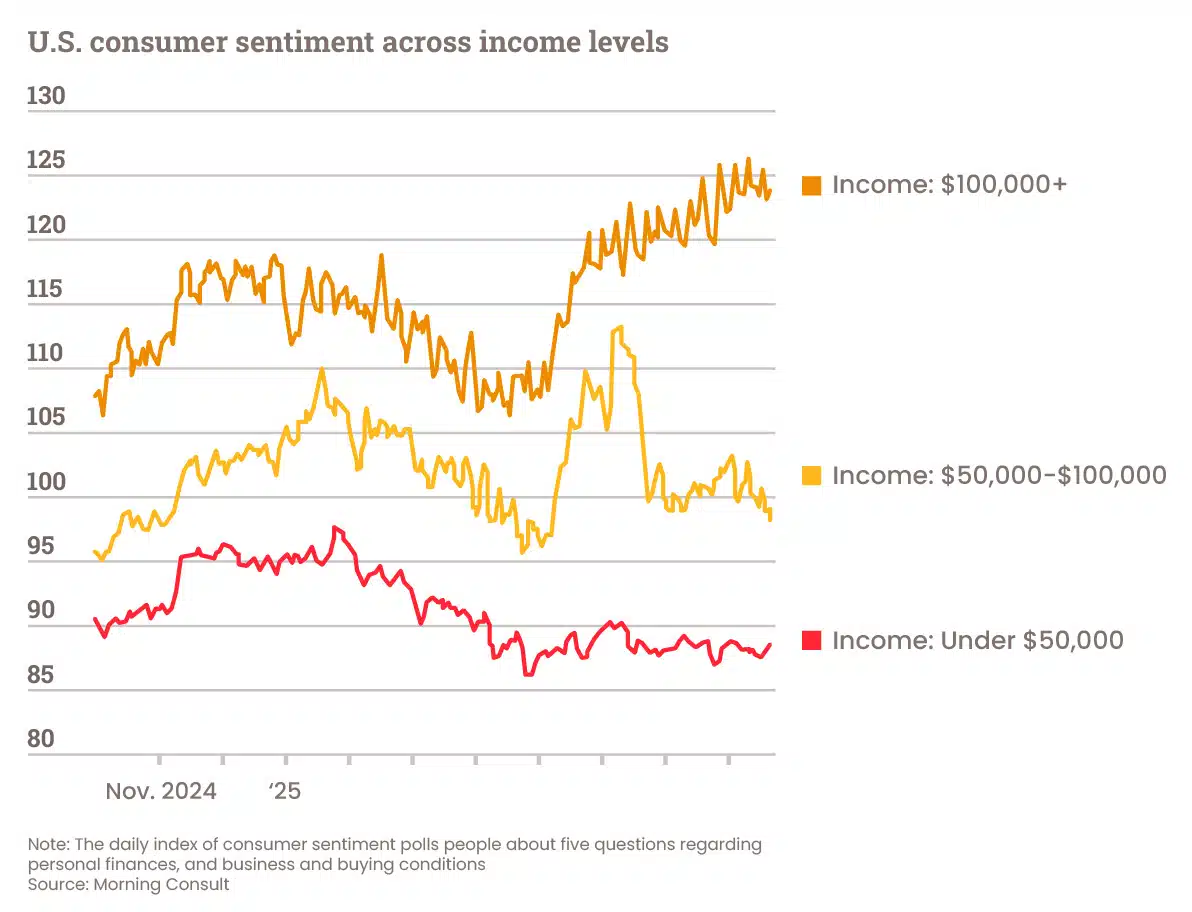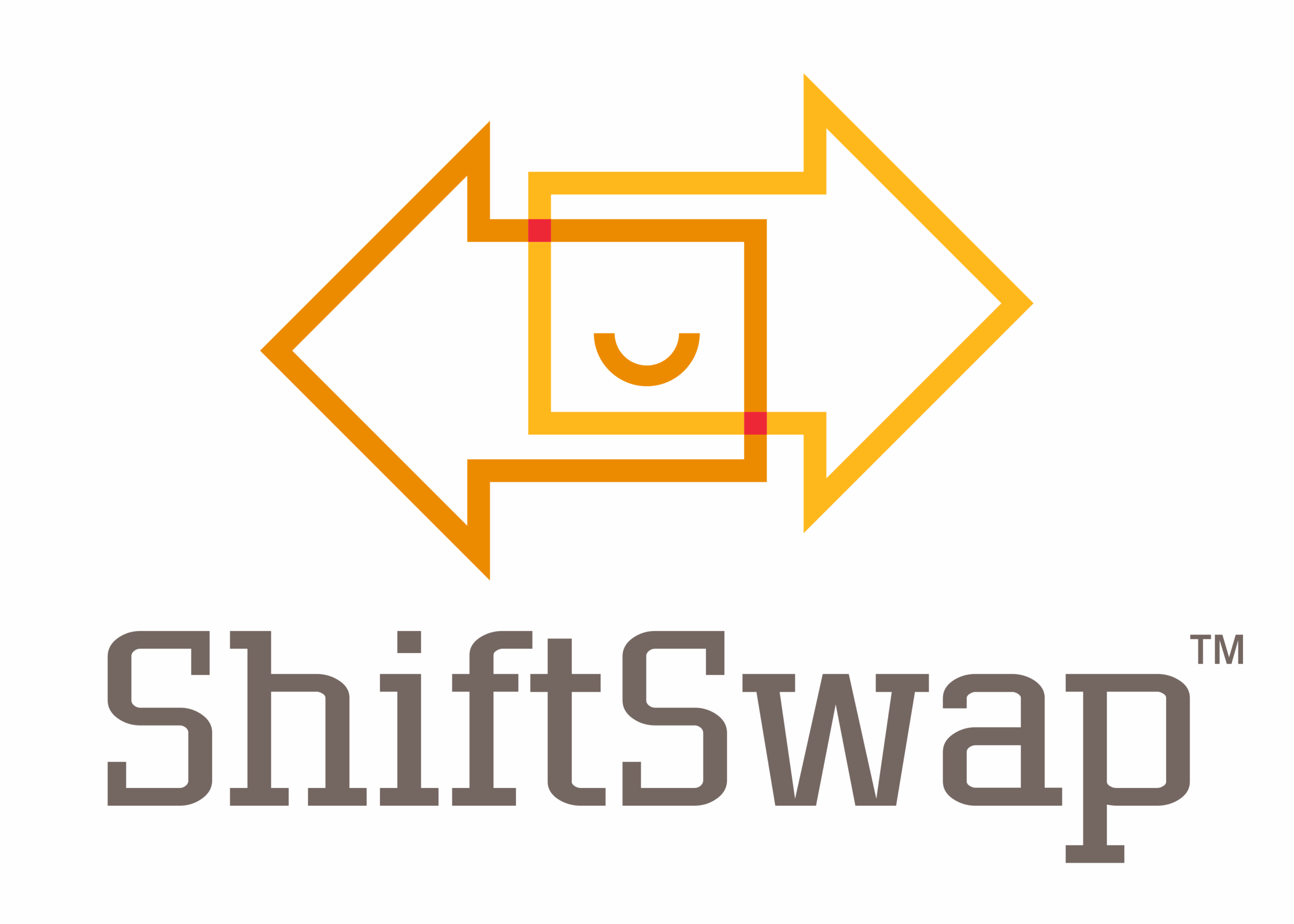The Squeezed Middle Class and Workforce Strategy
Throughout much of 2024, economists observed a positive trend among high-income earners, who continued to spend and express optimism about the economy. However, recent research paints a starkly different picture for middle-income families. The Wall Street Journal’s recent article, “The Middle-Class Vibe Has Shifted From Secure to Squeezed,” by Katherine Hamilton and Alison Slider, reveals that confidence among middle-class households is declining, with many feeling the pinch from rising costs and economic pressures.
Consumer sentiment, as measured by the University of Michigan, declined by nearly 6% in August, with households earning between $50,000 and $100,000 shifting from a state of optimism to one of uncertainty.
For employers, this isn’t just another economic figure. These households make up a large part of the workforce, including those who work in warehouses, manufacturing facilities, and retail stores. When their optimism fades, it doesn’t just impact consumer spending; it also affects workplace morale, engagement, and retention.
What the Data Says About the Middle Class
Surveys indicate that the middle class is cutting back in ways that directly impact both consumer markets and workplace dynamics. Retailers like Walmart, Kohl’s, and Dollar General are all noticing a shift toward more budget-friendly products and value-driven shopping. Meanwhile, restaurants such as McDonald’s and IHOP are seeing middle-class customers opting for promotions and less expensive meal options.
At the same time, big-name brands in clothing, auto parts, and travel are noticing that this demographic is reducing its non-essential spending. Families are tightening their grocery budgets, scaling back on entertainment, and skipping trips or luxury buys. Even those in the middle-income bracket, earning close to six figures, are feeling the pinch, reassessing their expenses, and focusing on what they really need.
This sense of caution seeps into the workplace in both subtle and significant ways. Middle-class employees often look for extra income opportunities to help manage rising costs, leading to a greater desire for overtime. They may also become more attuned to the consistency of their schedules, seeking systems that allow them to balance work and home life more effectively. In essence, the middle-class workforce is pushing employers to offer stability and flexibility simultaneously.

The Impact on Employers
The middle class isn’t just a consumer demographic; they’re also the backbone of the workforce. When household budgets get tighter, employees bring those pressures into their jobs. If managers fail to respond strategically, they may face higher turnover rates, lower morale, or decreased employee engagement.
One way these pressures show up is through the increased importance of overtime. For workers feeling the squeeze, overtime is a chance to earn more without having to switch jobs. Employers who make overtime accessible and fair can foster loyalty and meet their workers’ needs while also addressing gaps caused by fluctuating demand.
Shift flexibility is another key factor. Middle-class workers, who manage family budgets, also balance family responsibilities. The ability to pick up extra shifts for additional income, post for partial shift coverage when necessary, or avoid penalties for missing work due to unavoidable commitments can significantly impact retention. When employees feel that their employer supports them both financially and personally, they’re more likely to stick around, even during tough economic times.
Building Overtime into Operations Strategy
For many employers, overtime has historically been seen as a last resort, a necessary but costly measure during periods of high demand. But the current economic environment suggests overtime is a proactive strategy. By thoughtfully weaving overtime opportunities into their staffing plans, businesses can not only support their employees but also strengthen their operations.
For workers looking to earn a little extra, stepping up to cover shifts can provide a sense of control and financial relief. Managers, on the other hand, can tackle demand spikes without the last-minute chaos that often accompanies them. Rather than seeing overtime as a quick fix, integrating it into the workflow creates a balance between what employees need and the realities of running a business.
In industries where demand variability is “just a way of life,” such as logistics and warehousing, this approach ensures that operations remain stable without overburdening employees. A well-structured overtime plan is not just a safety net; it is a tool for engagement that directly addresses the challenges of the middle-class workforce.
Flexibility: A Retention Tool
Equally important to overtime is the concept of workforce flexibility. Workers crave the assurance that their personal lives won’t be penalized at work. Whether it’s a doctor’s appointment, childcare issues, or minor emergencies, employees shouldn’t have to worry about calling in sick or jeopardizing their job security. Flexibility allows them to handle these situations without conflict, enforcing a culture of trust and respect.
For employers, offering flexibility leads to lower absenteeism and a boost in morale. It also simplifies life for supervisors, who won’t have to spend hours juggling coverage. As a result, HR departments see the benefits of reduced turnover and fewer employee relations headaches. When done right, flexibility strengthens the bond between workers and supervisors. It gives employees more control over their time while equipping managers with tools to alleviate stress.
Where ShiftSwap™ Fits In
Imagine a bustling distribution center where the workload can change at a moment’s notice. Without the ability to adapt, managers find themselves in a difficult position, asking employees to work late one week and then cutting their hours the next. This back-and-forth leads to frustration among staff, a dip in morale, and higher turnover rates.
Now imagine the same center with a system in place that allows workers to pick up overtime shifts when demand is high or post for VTO when demand slows. Employees receive instant notifications and can make choices that fit their personal needs. Managers, meanwhile, maintain coverage without burning out their teams or wasting time on manual scheduling.
ShiftSwap™ helps operations leaders solve these exact issues. The platform automates shift posting, approvals, and communication, allowing managers to execute their labor plans without administrative headaches.
With ShiftSwap™, managers can quickly post overtime shifts, offer voluntary time off without worrying about coverage gaps, and send out instant SMS or email alerts to all eligible employees. Approvals and denials are just a click away, making the whole process smooth for supervisors and clear for workers.
Turning Challenges into Opportunities
The pressures on the middle class are significant, reshaping both consumer behavior and workplace dynamics. Workers are looking for ways to earn more, balance their time, and find stability in uncertain times. Employers who recognize these challenges and adjust their labor strategies accordingly will find themselves ahead of the competition.
Workplace flexibility has become essential for meeting the needs of today’s workforce. ShiftSwap™ provides the automation and adaptability that enable leaders to support employees while maintaining efficient operations.
By recognizing the realities of the squeezed middle class and responding with practical, people-first strategies, businesses can turn a challenge into an opportunity, resulting in stronger morale and lower turnover.
Start Planning for Success
Schedule a demo with ShiftSwap™ today and learn how to streamline your workforce management.

